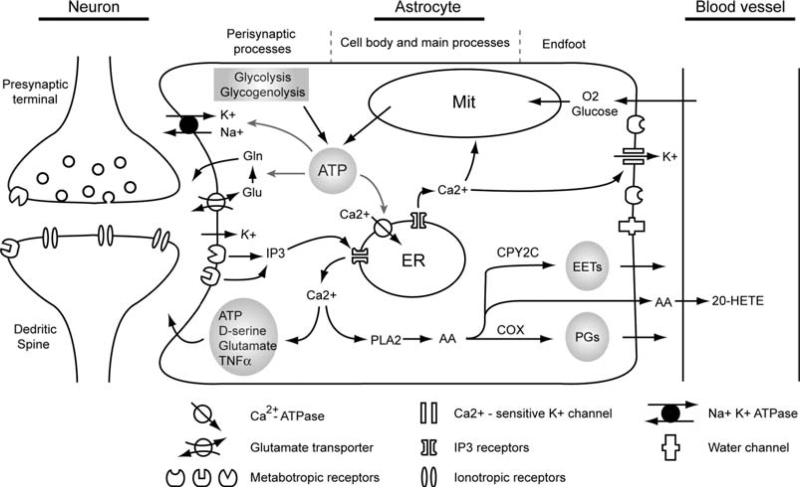Fig. 5.1.
Proposed mechanisms that link synaptic activity, cerebral vasculature regulation and astrocytic energy metabolism with astrocytic Ca2+signaling. Synaptic released neurotransmitters activate metabotropic receptors in astrocytic perisynaptic processes, causing elevation of intracellular Ca2+ through a phospholipase C-dependent pathway. Increases in astrocytic Ca2+ are associated with release of gliotransmitters which feed back to the synaptic activity. Astrocytic Ca2+ signaling may also propagate to the astrocytic endfoot, releasing vasoactive agents through phospholipase A2(PLA2)-dependent pathway as well as activation of Ca2+-sensitive K+ channels. Furthermore, Ca2+ is a well established stimulator of oxidative-phosphorylation which accelerates ATP production from mitochondria (Mit). Due to the small diameter of perisynaptic processes and the absence of mitochondria in these structures, ATP can also be generated through glycolysis and glycogenolysis pathways particularly in astrocyte perisynaptic processes. The major energy consuming processes in astrocyte include converting glutamate (Glu) to glutamine (Gln) after taken up by glutamate transporters, uptake of K+ from extracellular space through Na+-K+ ATPase and restoring astrocytic cytosolic Ca2+ concentration by activating both plasma membrane and endoplasmic reticulum (ER) Ca2+ -ATPase.

